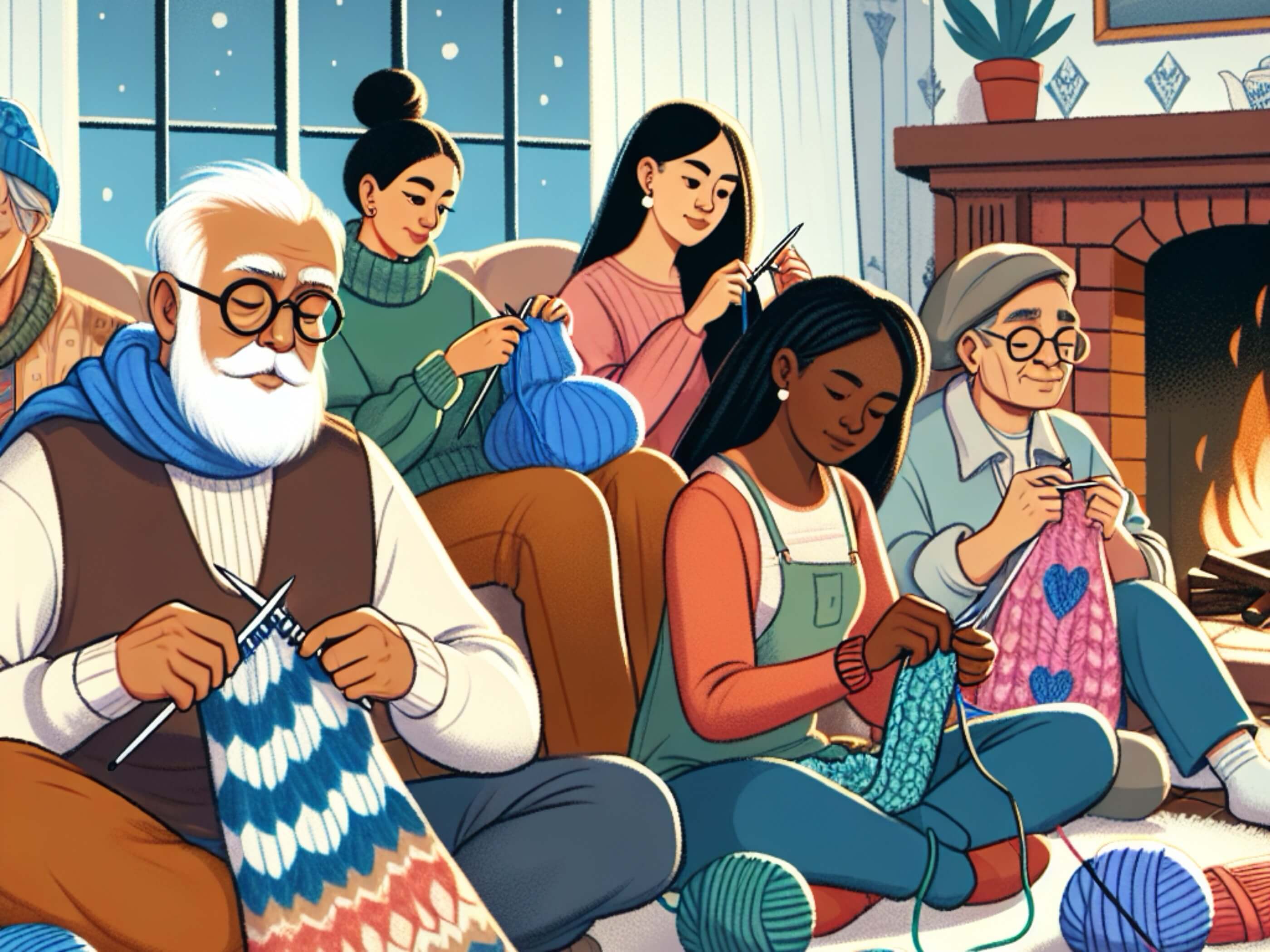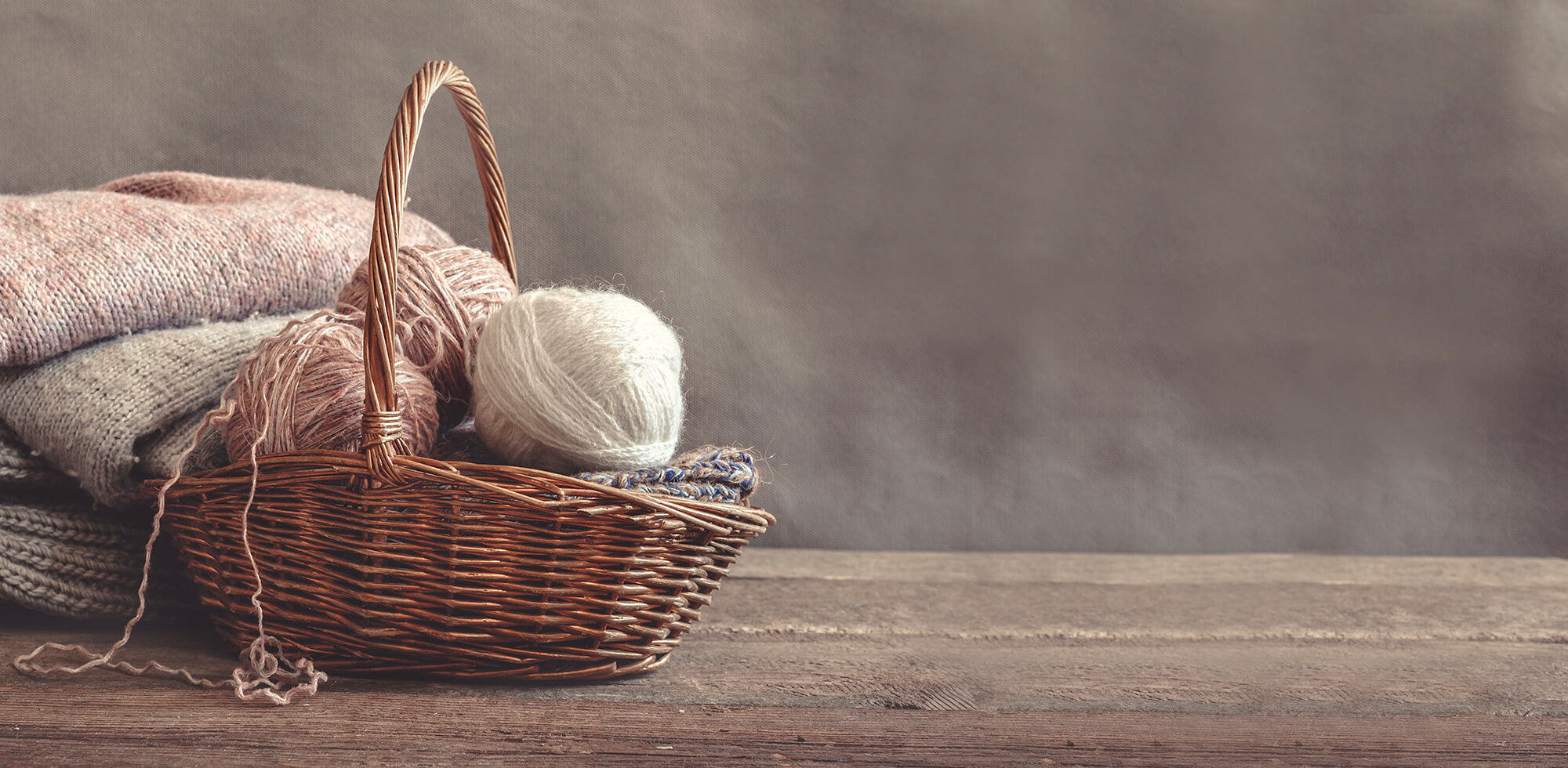By Claudia Ostrop
rosa p. – whose real name is Rike Pacholleck – has long been a prominent figure in the craft scene. Her blog, established in 2007, initially showcased her timelessly beautiful sewing patterns. Over time, she transitioned from sewing to knitting, and for several years now, she has been enchanting knitters with her delightful patterns which cater to every yarn lover's desire, encompassing everything from socks to sweaters, cardigans, and hats.
Her designs are very much to our taste: they all have that certain something, but are wonderfully classic and have the potential to be favorites for many years, not just fleeting fashion trends.
Her latest creation is the Roosi Blouse – a casually cut, light, and airy sweater knitted with our Mohair Bliss. Notably, this piece marks a special milestone, as the Roosi Blouse is Rike's 100th knitting pattern. We are delighted with the exceptional design and grateful that Rike has taken the time to chat with us.

Hello Rike, it's wonderful that you could take some time for us!
You are indispensable in the German crafting community. From sewing to knitting, you create timelessly beautiful designs. How did you begin this journey?
Hello! I am very pleased to meet you all!
It has always been exactly what I wanted to do, but it took many years and many detours to get to where I always wanted to be. A lot of things and many children came in between 😊.

After graduating from high school, I actually wanted to do an apprenticeship as a tailor and then go to fashion school for a vmasters degree in Munich. I had already signed an apprenticeship contract, but my parents were against it. So I ultimately, out of embarrassment, started studying education. As my five children came along, due to the lack of adequate childcare in the 80s and 90s, I could only work part-time. Eventually, many years later, I ended up in a fabric store in Freiburg. There, I met an incredibly skilled master tailor who also worked for a large and traditional pattern manufacturer here in the southwest. I learned a lot from her, in every way. She not only taught me the basics of pattern making but also showed me what I was capable of.
My path led me further to a great sewing machine manufacturer. During this time, I worked at large trade fairs and internal training sessions for retailers. Among other things, I learned from scratch how a sewing machine works. During this time, I also started publishing books. Although most people probably associate me more with sewing and knitting, my first book was actually a crochet book! This was followed by several very successful books with classic, timeless patterns that are still current and easy to modify.
Of course, I also knitted during this time – it has always been a kind of therapy for me. On the one hand, it is like a meditative break for the brain, but on the other hand, it is always very exciting. Knitting is sometimes like a crime novel, and I simply cannot stop. “Just one more row...!”
Who taught you you how to knit?
I learned to knit from my grandmother when I was 7 years old. By the way, my grandmother’s name was Rosa, and I named my blog and later my label after her. My mother always supported my love of knitting: I was always allowed to have wool (and books). That leaves a mark! I knitted a lot, even at school and during my final exams. I think the teachers were quite happy about it because I was quiet – and concentrated 😊.

Do you remember what your first knitting project was?
Of course! It was six identical egg cozies with pom-poms. I knitted them in garter stitch with white and blue variegated yarn – matching my grandmother’s onion pattern dishes. Later, it became more challenging. I still remember a sweater that I knitted (during religion classes in high school) following a pattern from “Brigitte” magazine. It was typical 80s style: chic with everything we loved back then; lots of colors and a road running across the chest and belly with a snail crawling on it. Sounds terrible, doesn´t it? I think it could be worn again today 😊.
By the way, my Emmi Blouse was inspired by a sweater from that time. I had knitted it twice and never forgotten it. My mother showed me photos from that time, and I knitted the sweater again – modified and made itseamless worked from top to bottom. I have knitted continuously throughout my life and in every situation. When my children were small and my days were filled, I mainly knitted socks because they were always needed. I could do that half asleep, with one or two children on my lap, and with my eyes closed to the music of a lullaby.
How do your designs come about? What inspires you?
I have an idea. I get the yarn. I make a swatch or two or three. I calculate. I write a pattern.
And then I start knitting. And in 90 percent of the cases, I throw my concept overboard because while knitting I have so many good ideas that fit the yarn and the color perfectly. In the end, it looks much better than what I originally planned. So, the yarn clearly takes the lead in this process. And I follow its instructions, so to speak.
One thing is almost certain: the construction is done in one piece. I simply like it very much when you can try it on in between, which is why I prefer to knit from top to bottom.

I also guide myself by trends, of course. For the Roosi Blouse, for example, I designed slightly wider sleeves. However, they are only as wide as they are still practical. I want to be able to wear my hand-knitted treasures and manage my everyday life with them. So, the sleeves are designed so that I can lift a coffee cup without getting wet, reach my keyboard without getting tangled, hold the dog leash without falling.
And while we're on the practical side of my work: I am very structured and organized. Everything runs strictly timed and on schedule for me. This probably sounds very different from what many imagine the life of a designer to be. Outwardly, I am rather perceived as relaxed with a cup of coffee and knitting in hand. That does not correspond to my working reality, of course. As a one-woman business, I am always and for everything responsible, basically 24/7. Only discipline helps. But in fact, it helps me to have time and space for creativity afterward.

What yarns do you like best?
I prefer “honest” yarns without frills in good quality. I like clear yarns with their own character in subtle colors. It can be a simple merino or Shetland yarn, a high-quality sock yarn without synthetic blend, or an honest alpaca yarn.
What is really important to me regarding yarns is that I want to support wool companies and dyers “on site,” meaning here with us in Germany and Europe. Our industry only works properly if we all stick together somehow. And this is especially important in times of crisis. Only together can we get through the next period.
Mohair Bliss stands out a bit from Merino and Shetland wool!?
Haha, yes, Mohair Bliss is really quite different. But it is great for the summer! Light, loosely knitted – such a sweater or cardigan also fits wonderfully over a dress! Yes, towards spring and summer, it always has to be something light for me. Mohair is perfect for that, and Mohair Bliss is simply a dream. A really great yarn of its kind – Mohair is not just Mohair.

Do you have anything else to say about Pascuali yarns?
I have known Paul for so long, and I really like his yarns. Pascuali's range includes very special and unusual yarns that are not available anywhere else. They have fantastic and truly unique qualities.
I find Pinta simply great, and also Nepal. I have already designed models with both yarns. For my Piilo Shirt, I knitted the Pinta double-stranded. Wonderful!
What I particularly like about Pascuali is that the range is reliable. That is not unimportant for me as a designer. When a yarn disappears from the market after a short time, and I have used it in one of my patternws, that is not very pleasant for my customers and me.
A mother loves all her children.... Do you have a favorite design?
Oh yes, there are always some that I like to wear best because they fit perfectly into my life! For example, there is the Raakel Tee made with Pascuali Nepal, the classic Koora Sweater, and Erikka Slipover, which I like very much. In the summer, I find Kate's Longsleeve made with the silky Pascuali Cumbria beautiful. This yarn gives the ruffle at the hem a great, elegant swing. In fact, the Roosi Blouse made with Mohair Bliss immediately won my heart, and I am almost always out and about in it in the town.
However, I have always been more of a cardigan type – the Tavalli, the Piilo, and the new Luumi Cardigan are my favorites.

Do you do everything yourself, or do you have support for your work?
rosa p. is a one-girl show. But I still have support. There are my test knitters, some of whom have been by my side for many years. They support me with great dedication in the tests and are active together with me, for example, in my Facebook group. There, we jointly assist the knitters with advice and offer support for my patterns.
I have my patterns proofread by an (external) technical editor – an important factor for the quality of my designs – and I do not do the English translations myself either.
But everything else, like creating and laying out the instructions, photos, texts for social media, the newsletter, and even the YouTube video tutorials, I do myself. By the way, the knitting tutorials came about because I could teach my 7-year-old granddaughter, who lives at the other end of the country, how to knit even at a great distance. And this closes the circle for me: today I am the grandmother. The world has changed a lot since my childhood, but we still knit together with our children and grandchildren, passing on an old craft tradition.
Can I get a bit personal at the end? What do you do when you don't have knitting needles in your hands?
I spend a lot of time outdoors in the green! With my little dog Hazel, I like to walk through the vineyards we have right outside our door. I ride my bike every day – I only use the car in an absolute emergency.
I like to be here in our small town with its charming medieval setting and the view of the Vosges and the Rhine. Since I moved from Freiburg to the countryside last year, I rarely go to the city center.
Since this move, I have also had little time for it because we have taken on a lot of work by renovating a very old and previously long uninhabited house. The past year, my husband and I have been doing the renovation ourselves in our free time, making the ground floor liveable.
If I happen to have a free moment where I'm not biking, feeding the chickens, or working on old stone walls with a wire brush, you'll find me in one of the local cafes – knitting in hand.




